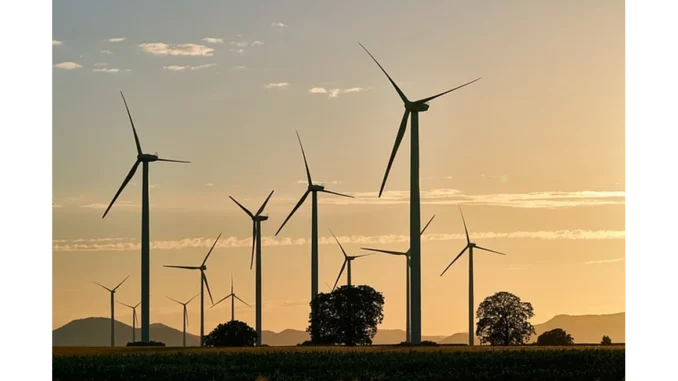
Summary
Subsea Energy Storage: A New Frontier in Sustainable Power
In an innovative stride towards sustainable energy solutions, Dr. Meredith Clarke of WSP USA is championing a project that aims to revolutionise energy storage through subsea applications of traditional pumped hydroelectric technology. By leveraging 3-D printing and offshore construction, this initiative promises to address spatial and environmental challenges, potentially transforming offshore wind farms and coastal city energy dynamics.
Main Article
Harnessing the Ocean’s Potential
Pumped hydroelectric storage has long been a cornerstone of the United States’ energy infrastructure, utilising elevated water reservoirs to store and release energy in response to electricity demand fluctuations. Dr. Meredith Clarke, a leading engineer at WSP USA, is part of a groundbreaking initiative that seeks to adapt this century-old technology for subsea deployment. “The ocean is one of our most underutilised resources when it comes to energy storage,” Dr. Clarke articulated, underscoring the vast potential of the maritime environment.
The project envisions the installation of large, hollow concrete spheres on the ocean floor, serving as lower reservoirs. These spheres, designed using advanced 3-D printing techniques, will endure the immense pressures found at depths of 600 to 800 metres. During periods of low electricity demand, water is pumped out of these spheres, storing energy until demand increases. At that point, water is allowed to flow back into the spheres, activating turbines to generate electricity. Dr. Clarke describes the process as “a perfect blend of engineering and nature’s own forces,” pointing out how oceanic pressure naturally assists in energy storage and release.
Global Collaboration and Economic Implications
The endeavour is spearheaded by Sperra, a US-based clean tech startup, with significant funding from the Energy Department’s Water Power Technologies Office and Germany’s Ministry for Economic Affairs and Climate Action, totalling $7.7 million. “Collaborations like these are vital,” Dr. Clarke noted. “They bring together expertise and resources from around the world.” The project also benefits from partnerships with renowned institutions such as Purdue University and the National Renewable Energy Laboratory, each contributing specialised knowledge to ensure the project’s success.
Beyond its technological ambitions, the project is poised to deliver substantial economic benefits. Dr. Clarke highlighted the potential for job creation and the use of local materials, emphasising a holistic approach to energy transition that strengthens local economies. “We’re not just talking about energy innovation,” she remarked. “This is about creating jobs and utilising local resources.”
Strategic Deployment and Environmental Considerations
The potential applications of this technology are considerable, particularly for coastal cities and seaports where land is scarce and energy demand is high. By situating these storage systems offshore, the project aims to provide reliable energy solutions without encroaching on precious land resources. “This is about providing sustainable energy storage options for areas that traditionally struggle with space constraints,” Dr. Clarke explained.
Despite its promise, the project faces challenges, particularly regarding environmental impacts and the logistics of underwater construction. Nevertheless, Dr. Clarke and her team remain optimistic. “Every challenge is an opportunity to innovate,” she stated confidently, expressing a commitment to addressing these hurdles through continued research and development.
Detailed Analysis
The subsea adaptation of pumped hydro storage represents a significant evolution in renewable energy technology. By moving storage systems underwater, this project addresses the dual challenges of space limitations and environmental impact, presenting a viable solution for densely populated coastal regions. The involvement of international stakeholders and academic institutions underscores the global interest in sustainable energy innovations, reflecting a broader trend towards collaborative efforts in tackling climate change.
The economic implications are equally noteworthy. By fostering local employment and utilising readily available resources, the project contributes to a sustainable economic model that aligns with global energy transition goals. This approach not only facilitates the adoption of clean energy technologies but also promotes regional economic resilience.
Further Development
As this ambitious project progresses, further developments are anticipated in both technological refinement and environmental assessments. Dr. Clarke’s team is expected to conduct rigorous testing to optimise the subsea systems’ efficiency and sustainability. Additionally, ongoing collaboration with international partners will likely yield new insights and innovations, potentially expanding the project’s scope and impact.
Readers are encouraged to stay informed about future updates, as this pioneering endeavour could redefine the landscape of renewable energy storage. Subsequent coverage will delve deeper into the technical advancements and policy implications arising from this groundbreaking initiative.

